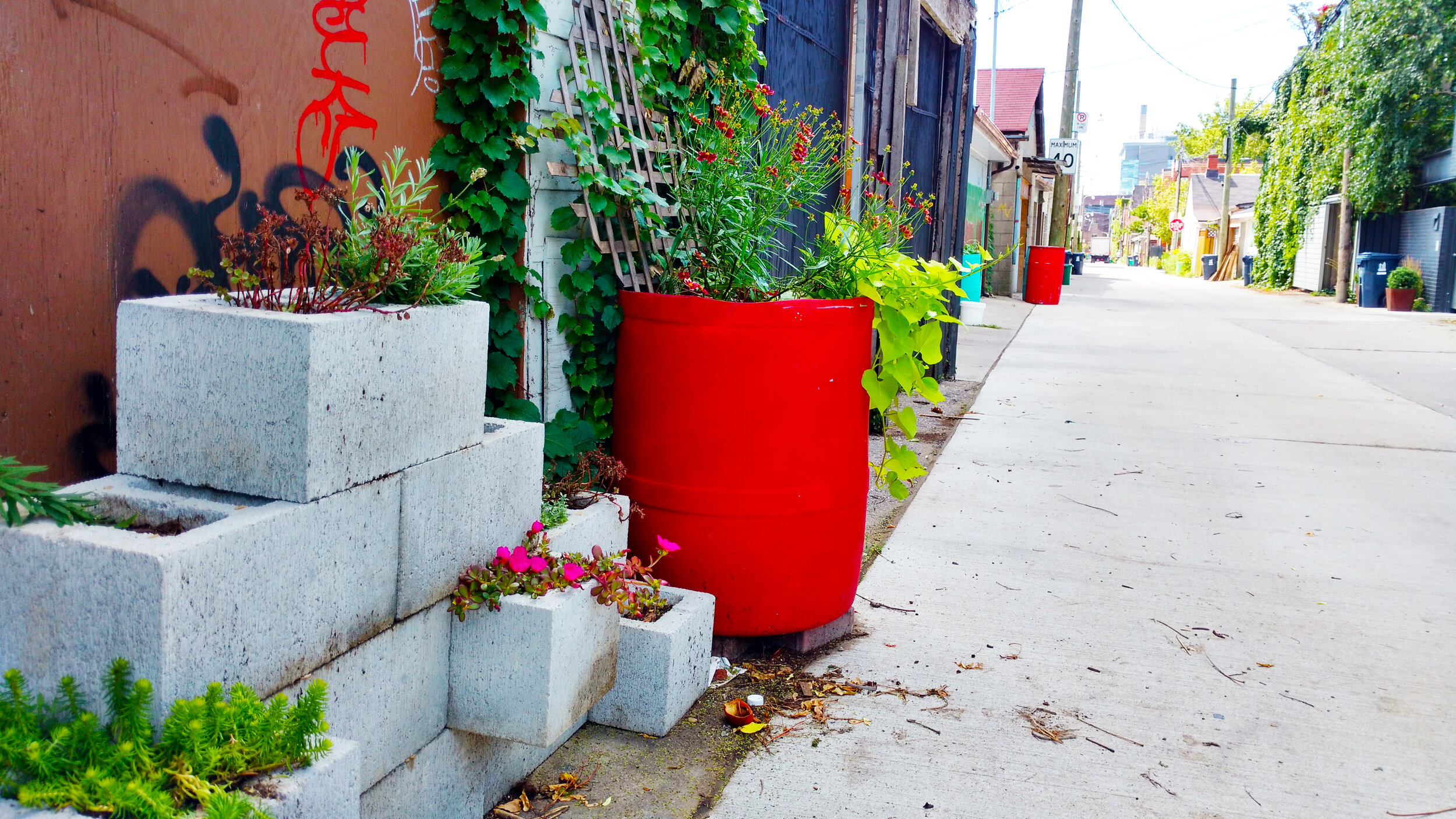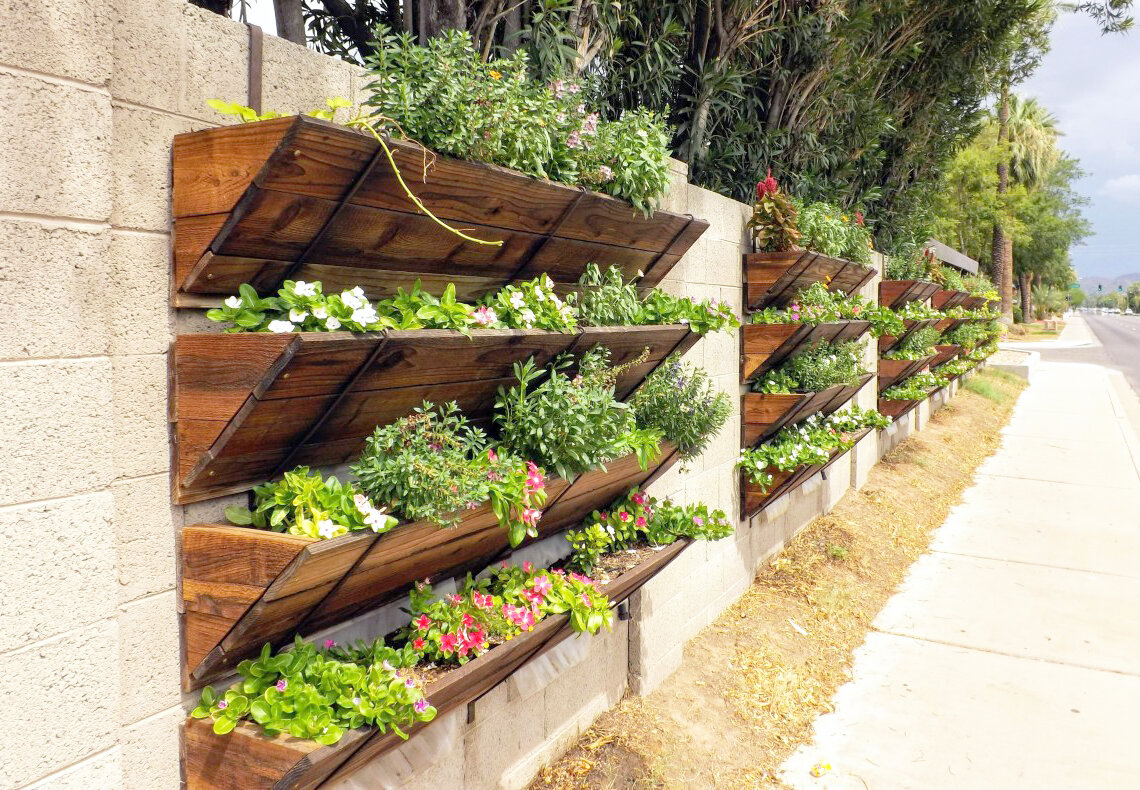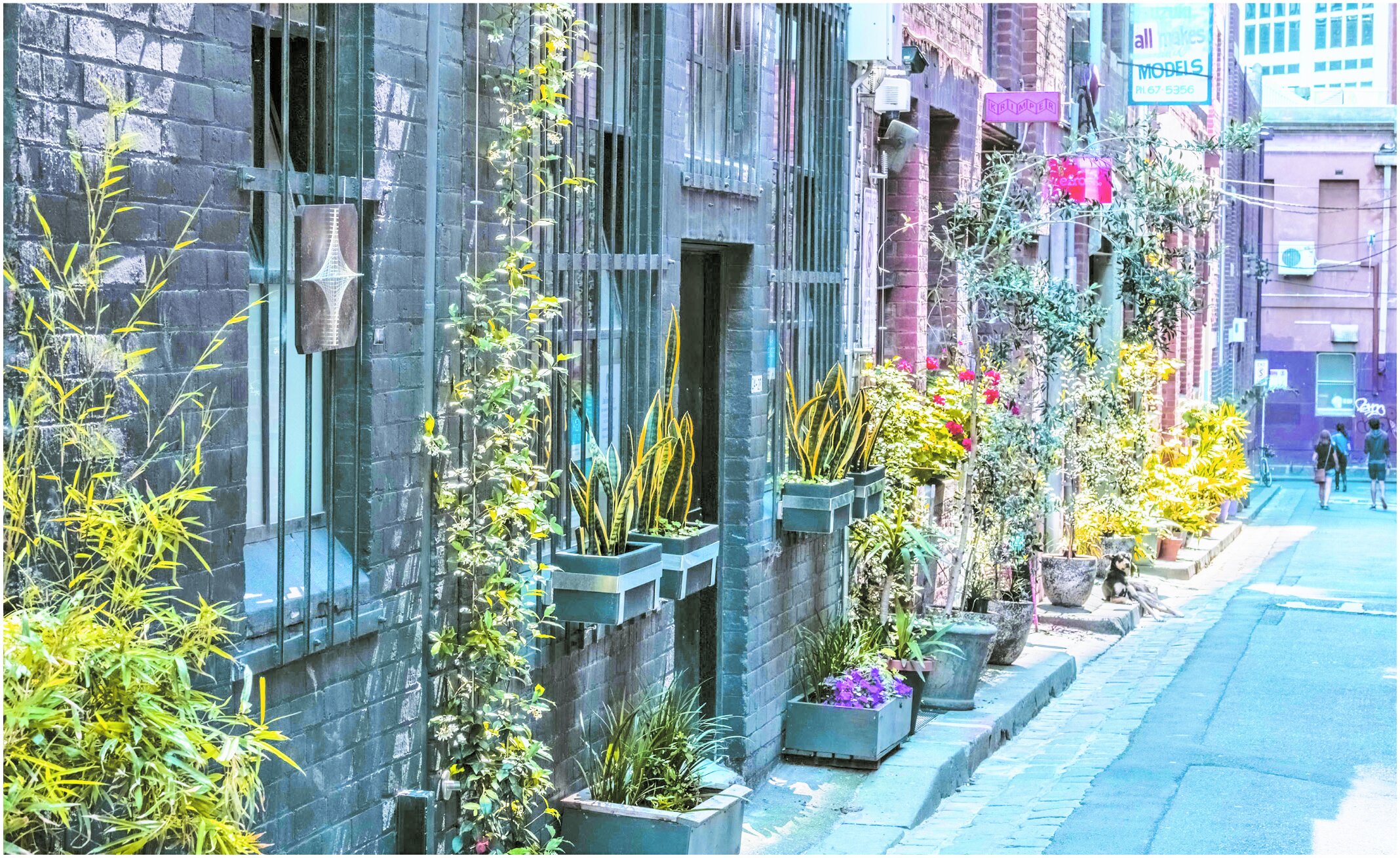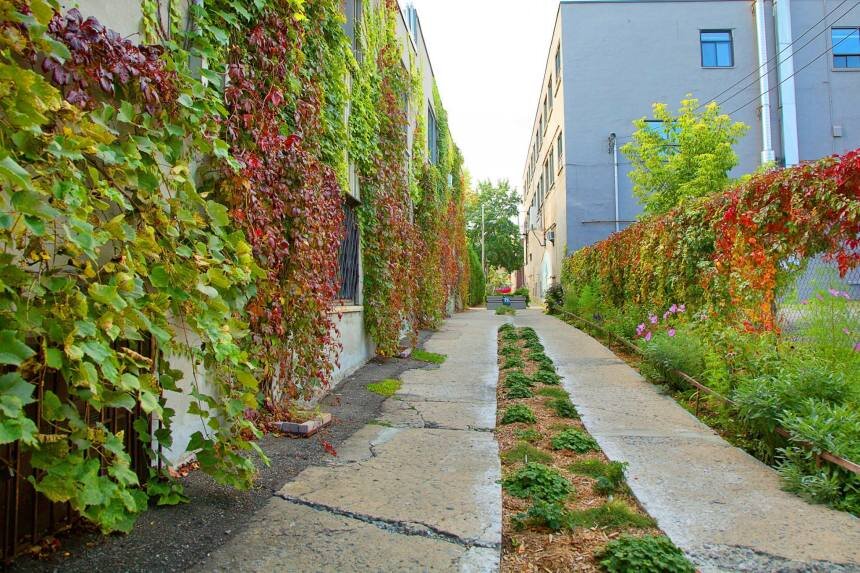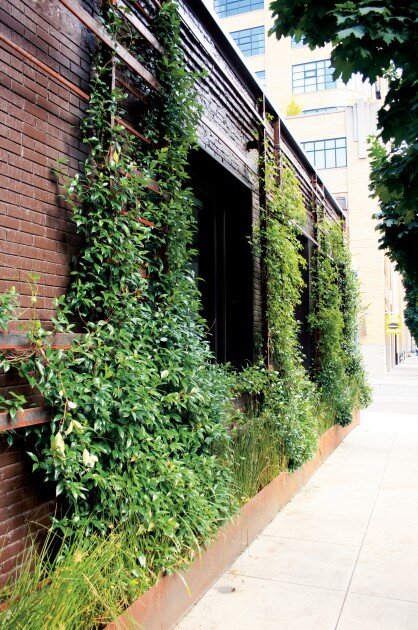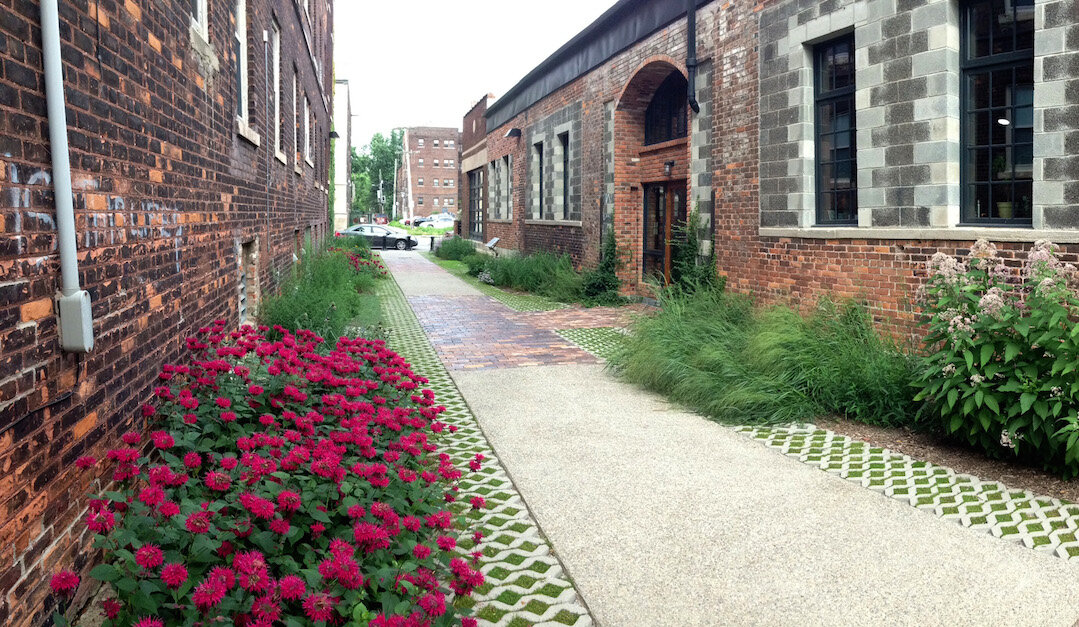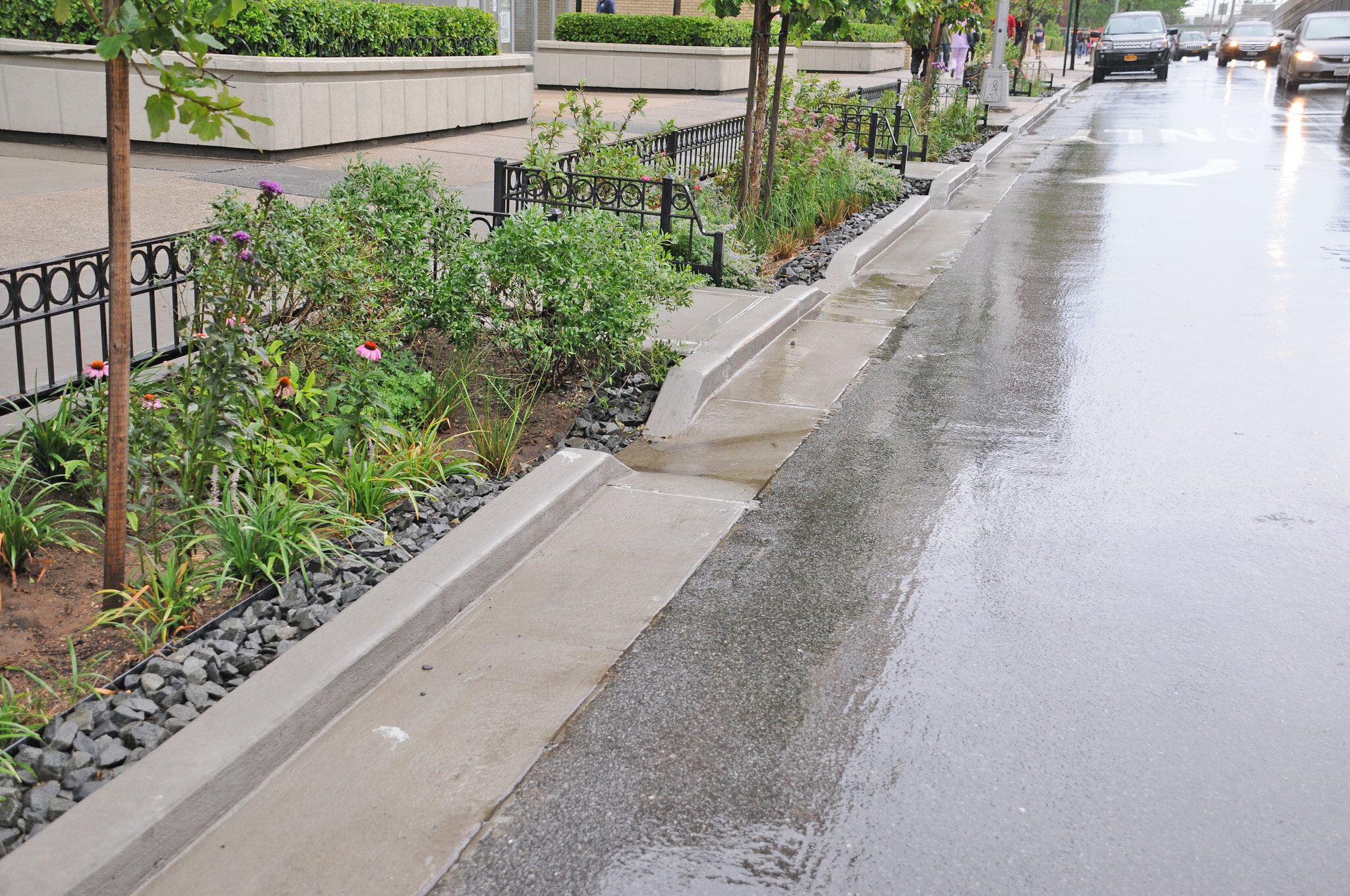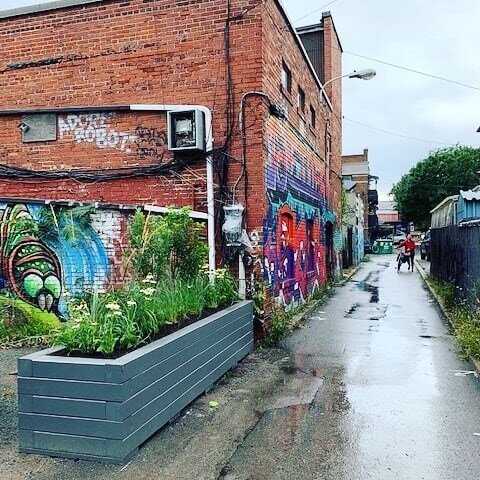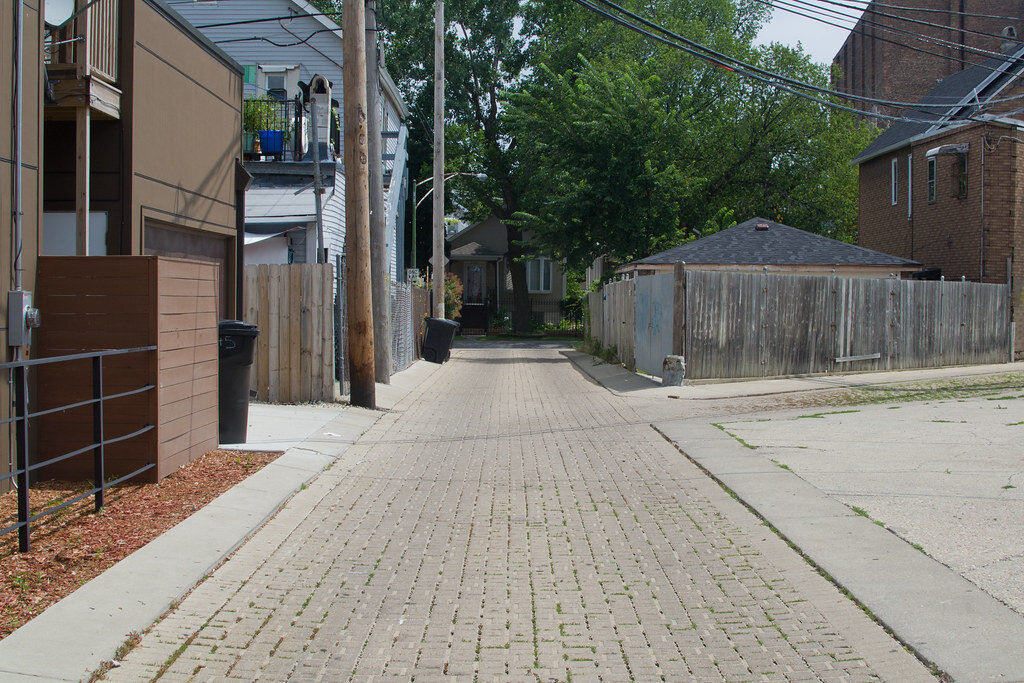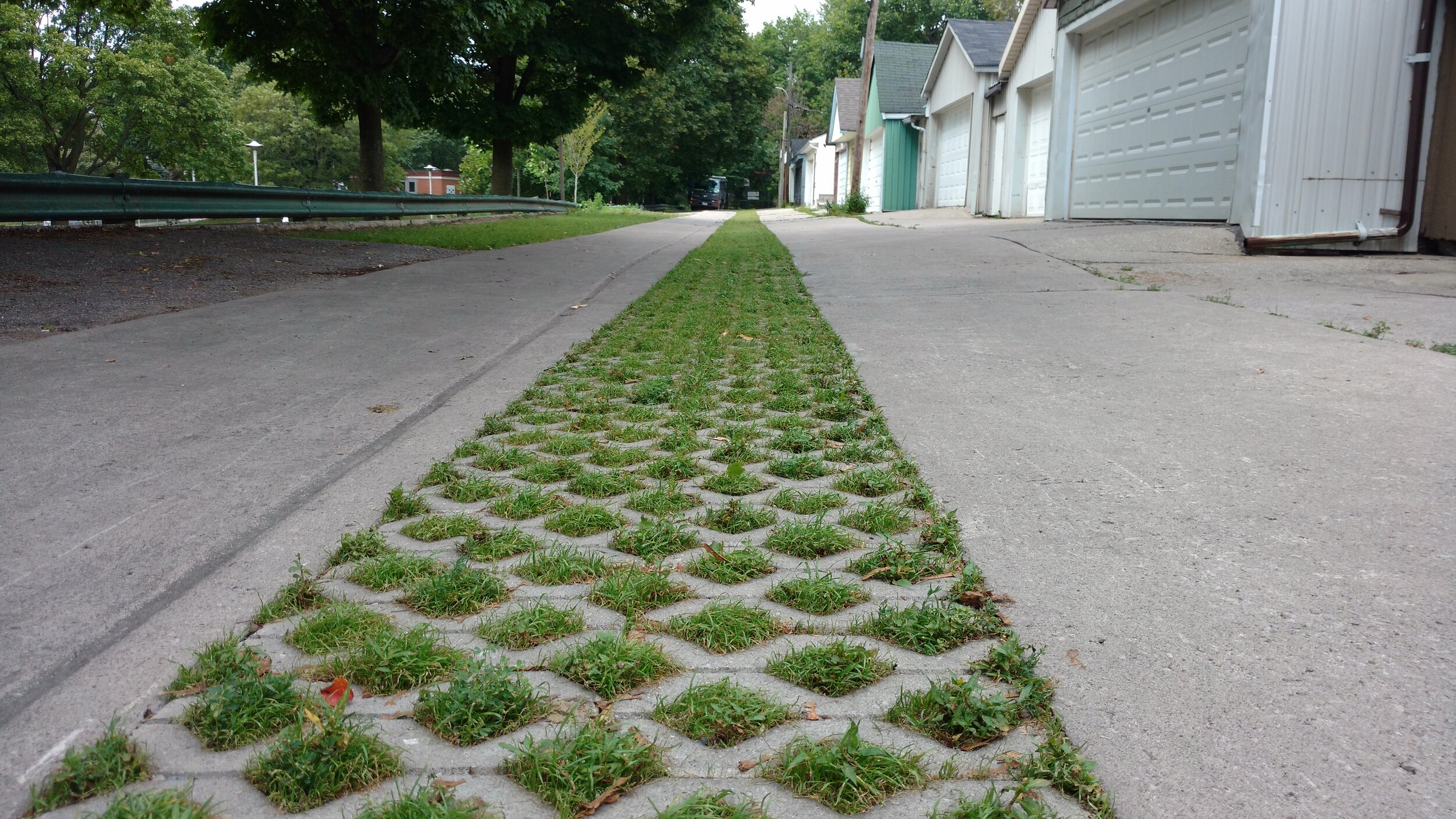Laneway greening can soften and beautify otherwise harsh, dull spaces, while at the same time engaging communities in the environmental stewardship of their neighbourhoods and improving their quality of life.
ABOUT THIS GUIDE
This guide provides examples of and tips on implementing laneway greening techniques, from simple interventions like adding planters and trellises, to more complex interventions such as creating living walls and installing permeable paving. It provides you with the steps, contacts, online resources, planning requirements, and funding tips that you need to jumpstart your laneway greening project.
WHY GREEN YOUR LANEWAY?
Provide an everyday space for neighbours to relax and come together;
Provide attractive, safe, and local play spaces for children;
Reduce the urban heat island effect;
Increase the natural infiltration of stormwater and reduce stormwater runoff;
Remove pollutants from the air;
Absorb wind and reduce wind speeds; and
Increase the biodiversity and resilience of the urban natural environment by providing micro-habitats for plants, birds, animals, and insects.
GREENING TECHNIQUES
There are a range of different greening techniques and methods that can work in Toronto’s laneways, which you can choose from and combine depending on the space available, your level of expertise, and available budget. This guide provides examples of and instruction on the implementation of a range of laneway greening techniques.
Container PLanting
Planting containers, such as freestanding pots, hanging baskets, window boxes, and wall baskets, make use of the horizontal space available on the edge of laneways. They allow you to introduce vegetation even when paved surfaces and constrained space make more conventional gardens difficult.
Vertical Greening
Vertical greening makes use of the vertical wall space available in laneways. This type of greening can be implemented simply with climbing vines rooted in the ground that grow up building walls and trellises, or with more complex living walls that include soil and irrigation systems.
Planting Beds
There is often a narrow strip of private property running alongside a laneway, between the public right-of-way and the adjacent fence or building wall. This is an ideal spot for a planting bed, whether conventional, raised, or a rain garden (a garden designed with a slope, fill, and vegetation to capture stormwater runoff).
Permeable Paving
As we’ve seen over the past few years, flooding can be a big issue in the city, especially during major storm events. Introducing permeable paving to your laneway can allow stormwater to percolate naturally into the soil, while also enhancing its visual appeal. This paving can span the entire width of your laneway, or can cover just the drainage channel at the center. If the central drainage channel of every laneway in Toronto was paved with permeable paving that would give us more than 200,000 meters square of natural drainage space!
GREEN LANEWAYS WE LOVE
Cities all over the world are greening their laneways using a combination of greening techniques discussed in this guide. Here are some examples of green laneways in North America and Australia:
Cosmos Nature Lane, Toronto
A community-driven greening initiative which saw cosmos flowers planted in the marginal spaces of the laneway, like along fences and in the cracks in the pavement beside garages, to create a beautiful pollinator pathway
Country Lane, Vancouver
A city-initiated pilot project which brought the bucolic aesthetic of a country road to a downtown neighbourhood by removing all the asphalt, save two narrow wheel paths for vehicles.
Ruelles Vertes, Montreal
A non-profit led greening initiative that has seen the transformation of over 100 alleys, in the Rosemont-La Petite-Patrie borough of Montreal, into green oases.
Green Your Laneway Program
Melbourne, Australia
A city-supported laneway greening partnership programme aimed at utilizing the potential of laneways as environmentally beneficial, public spaces.
Green Alley, Detroit
A collaborative, private laneway revitalization which saw the pedestrianization of the alley and the replacement of the existing asphalt with permeable paving and in-ground plantings. Part of the walkway is cobbled with reclaimed bricks, paying homage to the former industrial nature of the area, to create a sense of place.
BECOME A LANEWAY CHAMPION
The Laneway Project has developed over a dozen free-to-user public planning resources for use by grassroots-level community groups. Discover our resources and please consider donating to support the creation of more useful toolkits by becoming a Toronto Laneway Champion.


